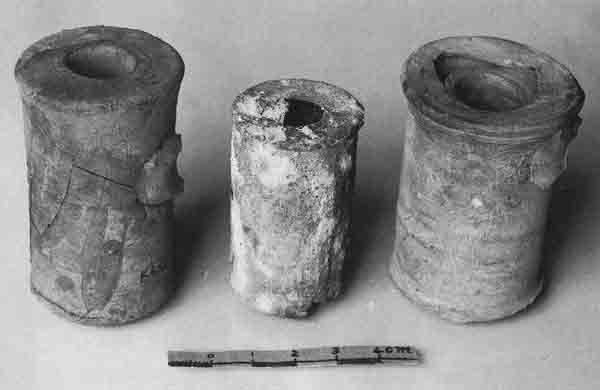Image Details

Israel Antiquities Authority
The evidence of the inkwells encouraged Roland de Vaux, who identified the site as home to an isolated religious community of Essenes, to conclude that many of the Dead Sea Scrolls had been written or copied at Qumran. His conclusions have since been challenged (see “Was It an Essene Settlement?”). De Vaux, excavating at Qumran between 1951 and 1956, discovered two of these inkwells in a room he called the “scriptorium,” while the third came from a neighboring room. The bronze inkwell, center, and the two ceramic inkwells display the typical cylindrical form and flat base of inkwells from the turn of the era.
